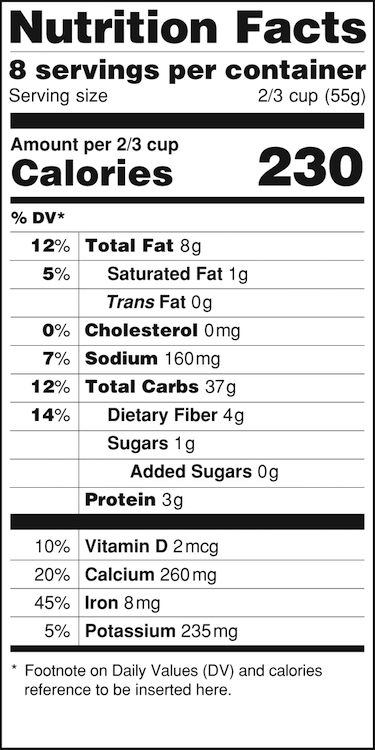Are big brands tricking you into eating sugar?
Now that the U.S. Food and Drug Administration is coming down hard on sugar, food and beverage manufacturers have to think differently.

The Food and Drug Administration has been coming down hard on sugar, mandating that nutrition labels be redesigned to clearly call out added sugar for the first time ever, and for good reason. Americans are eating more sugar than they realize—even those who make eating healthy a priority. Keep reading for three things you need to know so you can outsmart mega food and drink companies.
1. Why added sugar is being singled out on the label

On the new label, sugar will be called out twice: the number of grams of natural sugar and, underneath that, the number of grams of added sugar. While it’s definitely not a good idea to go overboard on foods high in natural sugar (like fruit, since natural sugars can still spike your blood sugar), the New York Times points out that natural sugar is broken down in the body differently than added sugar. Eating a piece of fruit, for example, is different than downing a doughnut because fruit also has fiber, which slows down how quickly fructose (the natural sugar) leaves the intestine and enters the liver.
Want a hard-and-fast rule? Keep added sugar under 25 grams a day. Plus, if you’re cutting down on foods high in added sugar, you’re likely reaching for options that are healthier overall, too.
2. Added sugar is in more places than you think
You expect added sugar to be high in things like soda and sweets, but it’s snuck in a lot of what you see sitting on grocery shelves too, like salad dressing and meat sauces. With the new labeling requirements, food and beverage manufacturers aren’t going to be able to dump sugar in without being called out for it. (Evaporated cane juice anyone?)
Expect to see lots of “now with less sugar!” call-outs on the front of the package, similar to how “gluten-free” labels starting popping up several years ago (even on foods that didn’t have gluten in them in the first place). Ingredient lists will have to be rethought—and brands will want you to take notice of their effort. But word to the wise: Nutritionist Ashley Koff, RD, says to always pay more attention to the back of the label than the front. “The front is everything they want you to hear; the back is the truth,” she says.
3. Natural sweeteners will be in demand
In an effort to use less of the sparkly white sugar (and unhealthy artificial sweeteners like Splenda) that are currently dominating the food scene now, food and beverage companies will likely turn to alternative options, like stevia, agave, and monk fruit, which are naturally much sweeter than sugar, so therefore less is needed. But not all natural sweeteners are created equal—this natural sweeteners guide lays out the pros and cons of each.
While food and beverage manufacturers may be scrambling to tweak their products, it’s consumers who ultimately win the war on sugar. It isn’t quite the end of added sugar—but it is the end of it being snuck into products.
Having a total freakout moment over sugar? Find out if you’re addicted without even knowing it. And be warned: You may not realize how much you’re getting in these five unexpected foods.
Sign Up for Our Daily Newsletter
Get all the latest in wellness, trends, food, fitness, beauty, and more delivered right to your inbox.
Got it, you've been added to our email list.










